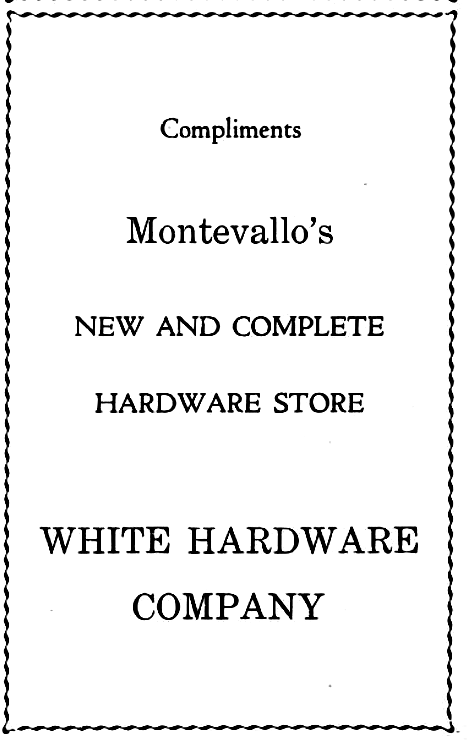717, #721, and #727 Middle Street – Part 2
- Montevallo #TBT

- Nov 19, 2018
- 3 min read

Ownership of the businesses occupying the three Middle Street buildings we have been focused on started to change and evolve in the 1930’s. The McGaughy brothers, whose grocery store had operated out of the #721 building for a number of years accepted an offer to purchase their business from local entrepreneur, J. A. Brown, Sr., in 1935.
Brown already owned the larger Montevallo Grocery Co. based in the old George Kroell building on Main Street and called his new Middle Street operation, Brown Grocery Co. He enlisted the McGaughy brothers to remain with him as managers of the store. Apparently the investment did not work out for Brown, for within two years he had sold the business back to the McGaughys, who resumed their ownership and continued to operate as grocers until 1941.
In 1937, Mr. L. D. Gilbert, who had two businesses, Montevallo Cleaners and Gilbert’s Haberdashery, both located in the same space in the 727 building, took advantage of Home Appliance Co. vacating the retail space on the ground floor of the 717 building and soon moved his retail clothing business from 727 to 717. In the process he remodeled the store, renamed the business Gilbert’s Ready-to-Wear, and expanded his line of women’s attire. While moving into this new venture, Mr. Gilbert continued to operate his dry cleaning business in the 727 building for another year until he sold it to Mr. Johnny Hardy in 1938.


It was not long before Clarence Chism moved to Montevallo from Boothton where he had worked as a coal miner. He became interested in the dry cleaning business and in 1940 bought Montevallo Cleaners from Hardy. Upon taking over the dry cleaning business on Middle Street, Mr. Chism also relocated his family into the upstairs apartment in the 717 building over Gilbert’s store.
Even with all this buying and selling – coming and going – in the 1930’s and early 1940’s, the retail commotion on Middle Street was far from over. The impetus for more change came from local merchant, Joe Klotzman, when he decided to break away from his partnership with his brother, Sam, in their clothing store on Main Street. By 1941, Joe Klotzman was looking for a suitable place to open his own department store and dry goods business. Apparently his eye landed on the store building that Stanley White had bought from Pat Kroell on Main Street and Klotzman made White an offer too good to turn down.

In spite of selling out to Klotzman, White was not ready to shutter his hardware business, so he also started looking for a new location himself. By 1941, the McGaughy brothers had been operating their grocery store in the 721 building for four years after buying it back from J.A. Brown, so they must have been open to selling out themselves. It was not long before Stanley White’s hardware store had replaced the McGaughy’s Middle Street grocery and Joe Klotzman was ensconsed in White’s former space on Main.
Gilbert’s Ready to Wear operated out of the 717 building from 1937 until 1942 when L.D. Gilbert took over the street level space of the Masonic Building on Main Street. When Joe Klotzman assumed ownership of the former White hardware building on Main Street, he was not interested in allowing the bowling alley in his basement to remain, so Tommie Latham’s lanes moved to the same space in the Masonic building that piqued Gilbert’s interest. It appears that “money talked” in this situation, because in less than a year on Main Street, the bowling alley was no more and Gilbert’s had moved in.
After Gilbert’s left the 717 building, the store sat vacant for a time until Glen Bashore moved to town with his young family in 1944 and began serving customers at his new Service Tire and Supply store. In addition to Goodyear Tires and automotive oriented products, Bashore offered a variety of items to appeal to the housewife and homeowner. One product line that he began to offer included radios, record players, and 78 RPM records. And at Christmas-time he opened up a special seasonal toy store in a vacant building across the street. Eventually he became so successful with his record business that he opened a separate store for them on Middle Street and even expanded this suddenly popular form of musical entertainment to other towns in the area.

The commercial roller coaster that impacted these three Middle Street buildings will conclude next week in Part 3.
Thank you Clay Nordan, Vice President of Montevallo Historical Society, for this information!




Comments